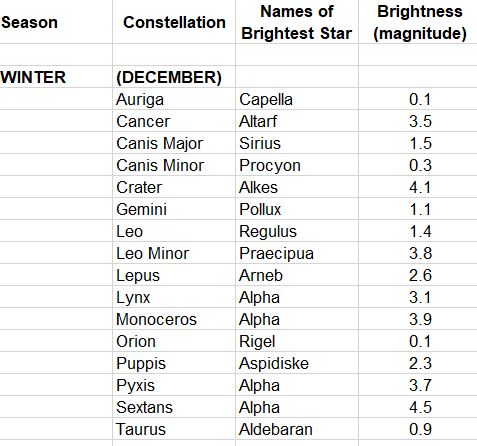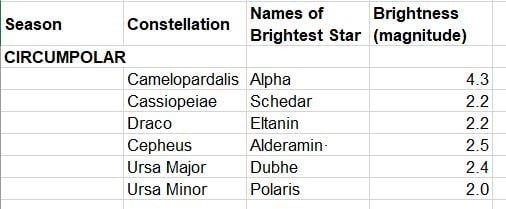For guidance on reading the tables for beginners – please go here
This year of stargazing begins after 5:30 pm as twilight fades to reveal a sky full of stars. The thin crescent of the Moon is setting. The Moon is visible earlier than 5:30, so try viewing with binoculars in the twilight sky. It is a sublime companion to tall trees in the same field of view.
As the sky darkens, Venus is up to the left of the Moon and is followed by the much dimmer Saturn. Turning around to look to the east we see Jupiter about 35º above the horizon. Lower down we see Mars rising in the ENE following the constellation Gemini.
The annual Quadrantids meteor shower is on the night of January 2-3. These relatively fast meteors leave moderately bright trails across the sky. They radiate from a point that will rise in the northeast around midnight. All you need to observe them will be a lounge chair, warm sleeping bag and a warm drink.
NOTABLE EVENTS
Jan 2 Quadrantids Meteor Shower
Jan 4 Earth at perihelion (147 million km)
Jan 6 1st quarter Moon
Jan 10 Venus at greatest evening elongation
Jan 13 Full Moon
Jan 15 Mars at Opposition
Jan 19 Sun enters Capricornus
Jan 21 Last Quarter Moon
Jan 29 New Moon
MONTHLY TABLE

Main Meteor Showers
Meteor showers are best observed after midnight when our hemisphere is ploughing into the meteor stream. Although the duration of the most active portion of the shower is short, some shower meteors can be seen many days on either side of maximum.
On January 2nd & 3rd 2025 the Quadrantids radiate from an area 20-degrees east of the Big Dipper’s handle. The short duration for the shower is some what balanced by the possibility of bright “fire balls”. Meteor showers are typically best after midnight, but the last quarter Moon rises at about 23:30 and will overwhelm the fainter meteors. This makes this year only marginal for observing this shower.

Dates for the Phases of the Moon
Entries are in Eastern Time and only require time zone correction. Do not use the correction from the “Ottawa-Time” table. Saskatchewan and parts of BC and Ontario do not use daylight savings. In these regions, subtract 1-hour from these times from March 10 to November 3.

Planetary Configurations
When at Opposition, planets will appear on the opposite side of the sky from the Sun – very roughly on the meridian at midnight. Conjunctions are when the planet has the same “longitude” as the Sun. A Superior Conjunction is when the planet is on the other side of the Sun, and an Inferior Conjunction is when it is between the Earth and the Sun. Only Mercury and Venus can be at Inferior Conjunction. Maximum elongation is when Mercury and Venus appear farthest from the Sun in our sky. This occurs either in our morning eastern sky (mor.) or our western evening sky (eve.). Do not apply the Ottawa-correction times to the times in this table.


Prominent Constellations by Seasons


Brightest Stars

One of Canada’s foremost writers and educators on astronomical topics, the Almanac has benefited from Robert’s expertise since its inception. Robert is passionate about reducing light pollution and promoting science literacy. He has been an astronomy instructor for our astronauts and he ensures that our section on sunrise and sunset, stargazing, and celestial events is so detailed and extensive it is almost like its own almanac.













